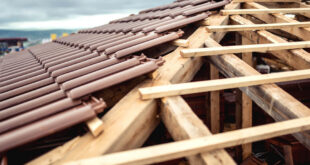
If you pay attention to architecture trends online, you’ve probably noticed that a lot of the hottest designs all have one thing in common: a flat roof.
Flat roofs are everywhere, as a practical solution for industrial buildings and skyscrapers to a hip new twist on traditional residential housing designs. And if you check out some of the most influential architecture blogs on the web, it isn’t hard to see why: flat roofs are one of the most affordable and most effective ways of designing a modern roof.
But what are the particular advantages of the flat roof, and how did flat roofs come into their own as the style of choice for twenty-first century designers? Keep reading to find out!
Roofing in America: A Brief History
In some parts of America and Canada, flat roofs have always been the norm. In large cities like Toronto roofing has always relied on a variety of flat roof designs, especially for row houses and apartment buildings.
But most individual family homes have relied on classic pitched roofs, simply to make snow removal easier, to provide more living space, and to facilitate insulation.
The tools and materials that were available to early colonists made Cape Cod style houses a natural choice, and the ranch style houses that are found across the suburbs were likewise practical, affordable, and easy to build.
As construction materials and methods have evolved, however, it has become easier to build flat roofs that can handle snowy weather, and with space at a premium in many parts of the United States and Canada, architects have begun incorporating flat roof designs into a growing number of houses.
The Flat Roof Advantage
This is also because of the unique properties of this style of roofing. Unlike pitched alternatives, flat roofs are easy to maintain, and use less materials. They are also easier to install, and depending on the materials used can be patched and repaired piecemeal rather than requiring the whole roof to be replaced at regular intervals.
Furthermore, this style or roof is much easier and cheaper to install, and can also expand the usable area of a home significantly, allowing homeowners to install decks or balconies for use during good weather.
While this does mean that homeowners with flat roofs need to be more intentional about maintenance (for example, don’t let your flat roof linger unrepaired if you have noticed rips or tears in the membrane!), because flat roofs are also easier to access, they are also easier to clean and maintain on a DIY basis, saving even more money in the long run.
For this reason, if you are considering buying a new home, or are planning on making extensive changes to your current home, you may want to take seriously the idea of moving toward a flat roof.
With so many obvious benefits, a house with a flat roof doesn’t just put you at the cutting edge of residential architecture — it also offers an affordable and practical way to live.
 A Very Cozy Home Home Decor Tips and Ideas
A Very Cozy Home Home Decor Tips and Ideas 